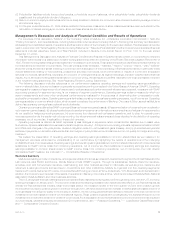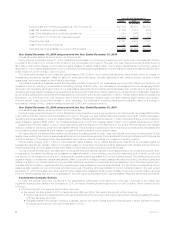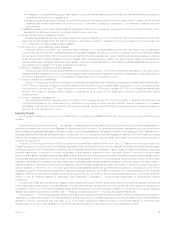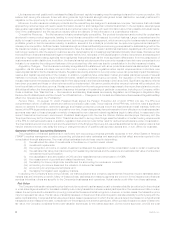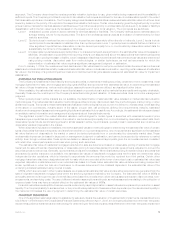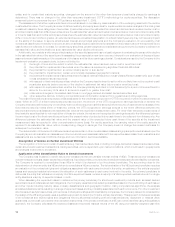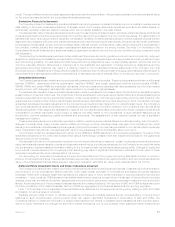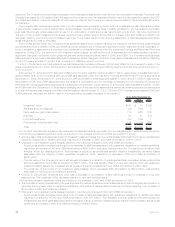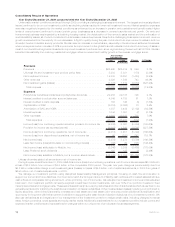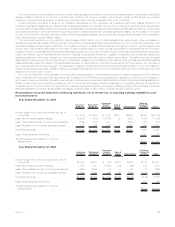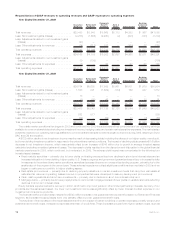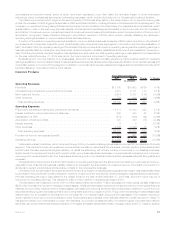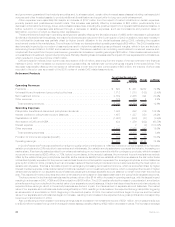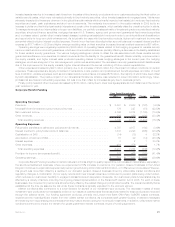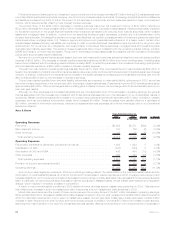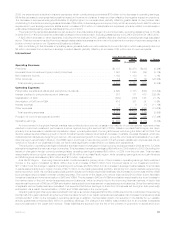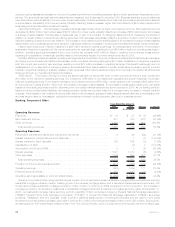MetLife 2009 Annual Report Download - page 21
Download and view the complete annual report
Please find page 21 of the 2009 MetLife annual report below. You can navigate through the pages in the report by either clicking on the pages listed below, or by using the keyword search tool below to find specific information within the annual report.Litigation Contingencies
The Company is a party to a number of legal actions and is involved in a number of regulatory investigations. Given the inherent
unpredictability of these matters, it is difficult to estimate the impact on the Company’s financial position. Liabilities are established when it is
probable that a loss has been incurred and the amount of the loss can be reasonably estimated. Liabilities related to certain lawsuits, including
the Company’s asbestos-related liability, are especially difficult to estimate due to the limitation of available data and uncertainty regarding
numerous variables that can affect liability estimates. The data and variables that impact the assumptions used to estimate the Company’s
asbestos-related liability include the number of future claims, the cost to resolve claims, the disease mix and severity of disease in pending
and future claims, the impact of the number of new claims filed in a particular jurisdiction and variations in the law in the jurisdictions in which
claims are filed, the possible impact of tort reform efforts, the willingness of courts to allow plaintiffs to pursue claims against the Company
when exposure to asbestos took place after the dangers of asbestos exposure were well known, and the impact of any possible future
adverse verdicts and their amounts. On a quarterly and annual basis, the Company reviews relevant information with respect to liabilities for
litigation, regulatory investigations and litigation-related contingencies to be reflected in the Company’s consolidated financial statements.It
ispossiblethatanadverseoutcomeincertainoftheCompany’slitigationand regulatory investigations, including asbestos-related cases, or
the use of different assumptions in the determination of amounts recorded could have a material effect upon the Company’s consolidated net
income or cash flows in particular quarterly or annual periods.
Economic Capital
Economic capital is an internally developed risk capital model, the purpose of which is to measure the risk in the business and to provide a
basis upon which capital is deployed. The economic capital model accounts for the unique and specific nature of the risks inherent in
MetLife’s businesses. As a part of the economic capital process, a portion of net investment income is credited to the segments based on the
level of allocated equity. This is in contrast to the standardized regulatory risk-based capital (“RBC”) formula, which is not as refined in its risk
calculations with respect to the nuances of the Company’s businesses.
Acquisitions and Dispositions
See Note 2 of the Notes to the Consolidated Financial Statements.
Recent Developments
On March 8, 2010, MetLife announced a definitive agreement to acquire American Life Insurance Company, an international life insurance
subsidiary of American International Group, Inc., for approximately $15.5 billion. The consideration will consist of $6.8 billion in cash and
approximately $8.7 billion in MetLife equity securities, subject to closing adjustments. Specifically, the equity security portion of the purchase
price will consist of 78.2 million shares of MetLife common stock valued at $3.0 billion, 6.9 million shares of contingent convertible preferred
stock valued at $2.7 billion and 40 million equity units having an aggregate stated value of $3.0 billion. The values of the common stock and
the preferred stock are based upon the closing price of MetLife’s common stock on the New York Stock Exchange on Friday, March 5, 2010.
MetLife expects the cash portion of the purchase price to be financed through a combination of the issuances of senior debt and Metlife
common stock as well as cash on hand. The transaction is subject to certain regulatory approvals and other customary closing conditions.
15MetLife, Inc.


